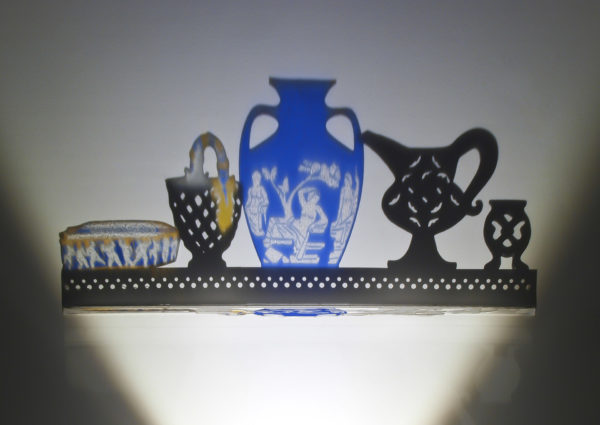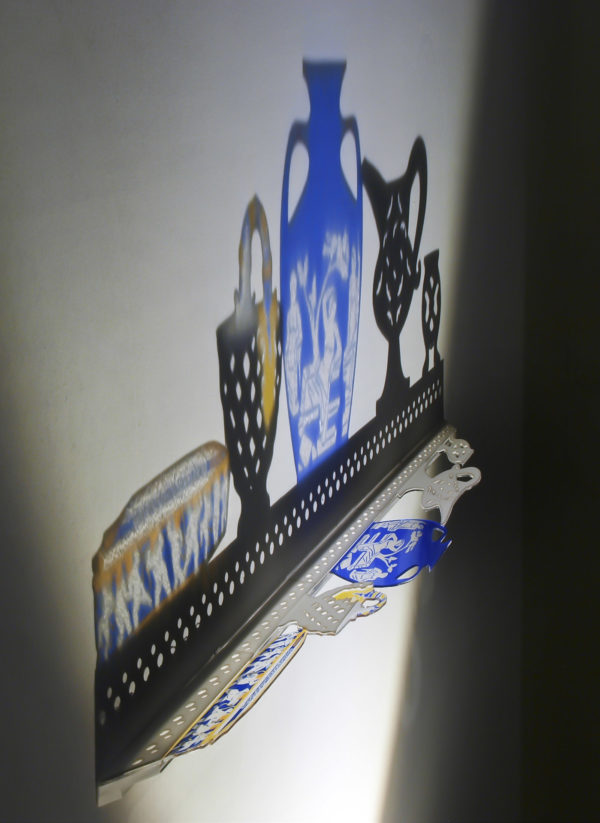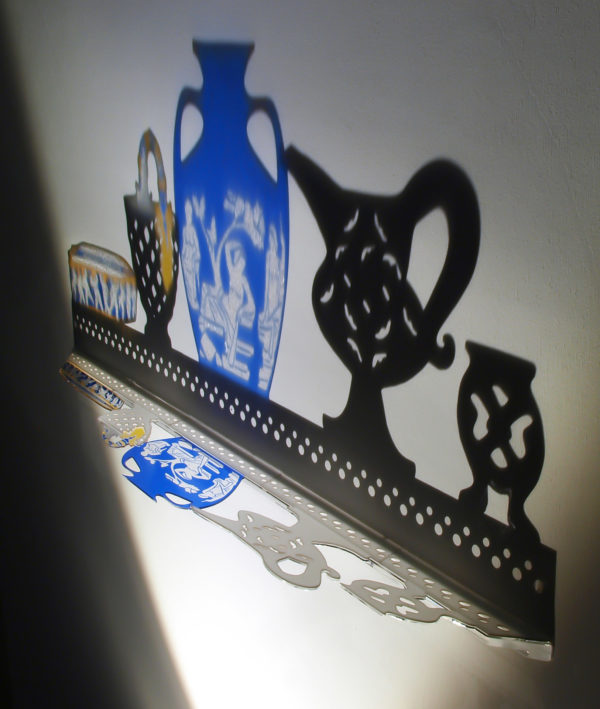Artista : Cimatti Antonella
Immagini
Dettagli
Altezza (cm): 33
Larghezza (cm): 70
Peso (kg): 1
Materia e tecnica: Laser cut sintered alumina, digital print on PVC Directional led spot
Tecnica: Material used is: 0.6 mm sintered alumina, a very translucent advanced ceramic material, fired at 1600°C. Part of the work is real- a thin, translucent laser cut-out of sintered alumina-ceramic attached to the wall at 90° and under-lit, projecting its shadow- creating a conceptual .
Note: L’opera comprende anche una lampada a led.
Anno di completamento: 2019
Edizione
I have always been fascinated by shadows and the history of ceramics.
So, in 2013 I began studying how I could combine these two antique ideas and, to this day I am still exploring this concept, creating more and more variations.
Virtual Museum#4 is my last conceptual installation never exhibited before.
The idea is to showcase objects that represent culture, myth and historical memory like the Portland Vase which is the icon of perfection.
It is still life but also a sort of virtual museum of ceramics: there are objects representing the history of ceramics, which are kept in the most important museums in the world.
The work returns, in real size, to the silhouettes of objects produced in Faenza between the end of the fifteenth century and during the sixteenth century, now preserved in the most important museums in the world,like the Pitcher which is kept at the Metropolitan Museum, the Inkstand which is kept at the Victoria and Albert Museum, or Cestino and Portauovo, which are kept at the Museo Internazionale delle Ceramiche in Faenza.
This installation puts them together again in a sort of Virtual Museum.
The work gives life and existence to shadows, creating “illusion” and lightweight ceramic artworks.
The are lit through ambient lighting to create an atmosphere, straddling the border between art and design that are placed in the environment, enhancing it, enriching it and creating a relationship to engage the viewer. Pieces that stimulate emotions and memories, which act as catalysts for experiences, and in some way, encourage dreams.
The work is carefully studied on the computer with an anamorphic effect: so some thin silhouettes, translucent laser cut-outs of sintered porcelain, are attached to the wall at 90° and under-lit, projecting their shadows- creating a conceptual installation.
from left to right:
Inkstand, decorated with a frieze of cupids, Faenza 1524, Victoria and Albert Museum, London;
Cestino, Faenza(1550 – 1599), MIC, Museo Internazionale delle Ceramiche in Faenza;
The Portland Vase, About 15 BC- Ad25, British Museum, London;
Brocca, Casa Pirota Faenza, 1527, The Metropolitan Museum of Art, New York;
Portauovo, Faenza, (1550 – 1599), MIC, Museo Internazionale delle Ceramiche in Faenza.



